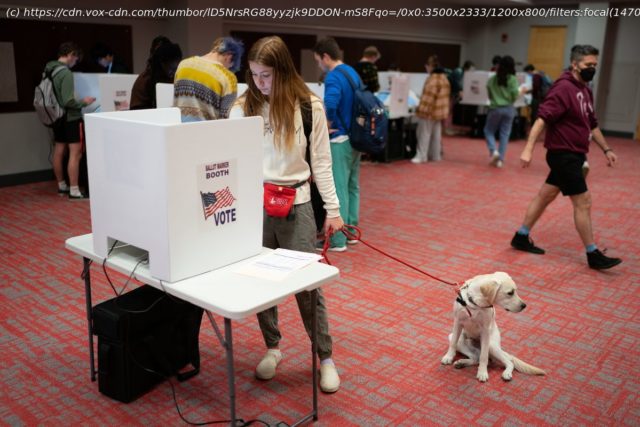Voters rejected new restrictions on ballot measures — with implications for November and 2024.
Ohio voters rejected a Republican proposal known as Issue 1 that would have made it harder for citizens to put issues on the ballot or for a constitutional amendment to pass in the state. It lost by 14 percentage points, earning just 43 percent of the vote.
The outcome has big implications for this fall’s election: In November, Ohio voters will decide on a constitutional amendment to protect abortion rights. And political analysts say the ramifications could extend into 2024 — when Democratic Sen. Sherrod Brown is up for reelection in Ohio and when Democrats hope to win big nationally by motivating voters on issues of protecting abortion rights and democracy.
The amendment would have raised the state’s threshold for passing constitutional amendments from a simple majority of votes, as has been the case for over 100 years, to 60 percent, which its GOP sponsors hoped would be too high a bar for abortion rights supporters to clear.
But the measure backfired, with analysts calling the election for the “no” side shortly after polls closed Tuesday night. Still, passage of the abortion rights amendment in November is no foregone conclusion; while polling so far bodes well for supporters, most citizen-led ballot measures in Ohio historically have failed.
Kelly Hall, the executive director of the progressive ballot measure group Fairness Project, hailed the victory as an “incredibly profound and inspiring day for our democracy.” She said her national organization looks forward “to an aggressive campaign in the coming months” to protect Ohio abortion rights in November.
Rhiannon Carnes, spokesperson for Ohioans United for Reproductive Rights, released a statement Tuesday night laying out the stakes for the future of abortion access following Issue 1’s defeat. “Ohioans know that if we don’t succeed,” she said, referring to the November referendum, “the government will have the power to ban abortion completely, even in cases of rape, incest, or when someone’s life is in danger.”How Issue 1 lost
In November, voters in Ohio will weigh in on a proposed amendment for reproductive freedom that would restore the right to an abortion up to the point of fetal viability — or the point at which a fetus could survive outside the womb. The amendment would also permit abortions beyond that point in cases when “the pregnant patient’s treating physician” deems it necessary to protect their life or health.
Though abortion is currently legal in Ohio through 22 weeks of pregnancy, a state law barring abortion after 6 weeks, with no exceptions for rape, is currently tied up in the courts. Pro-choice Ohio doctors led the push for the abortion rights measure on the upcoming November ballot, stressing that their ability to provide proper medical care is at urgent stake.
Restricting abortion rights was the primary reason Republicans placed Issue 1 on the ballot for the August special election. GOP officials recognized they could make it harder for any constitutional amendment to pass in November by changing the rules in advance. A poll from June found nearly 60 percent of Ohioans support the idea of a proposed amendment for reproductive freedom, but nearly 60 percent would not be enough to pass under the parameters of Issue 1. And while abortion rights ballot measures won in red and purple states last year, they all received between 52 and 59 percent of votes, making a 60 percent threshold seem sufficiently insurmountable.






